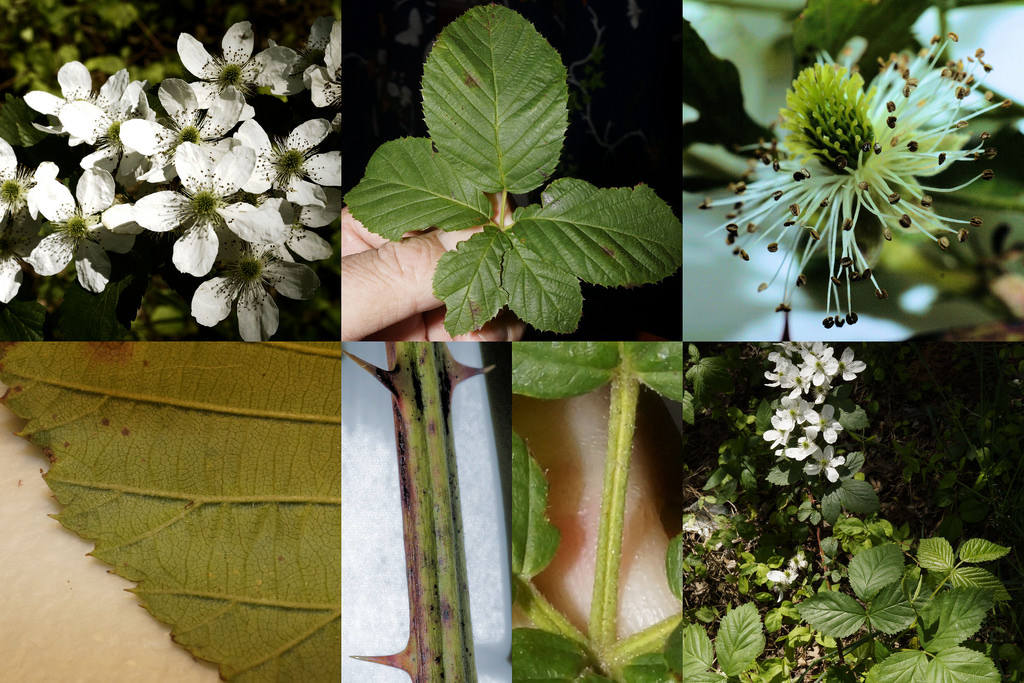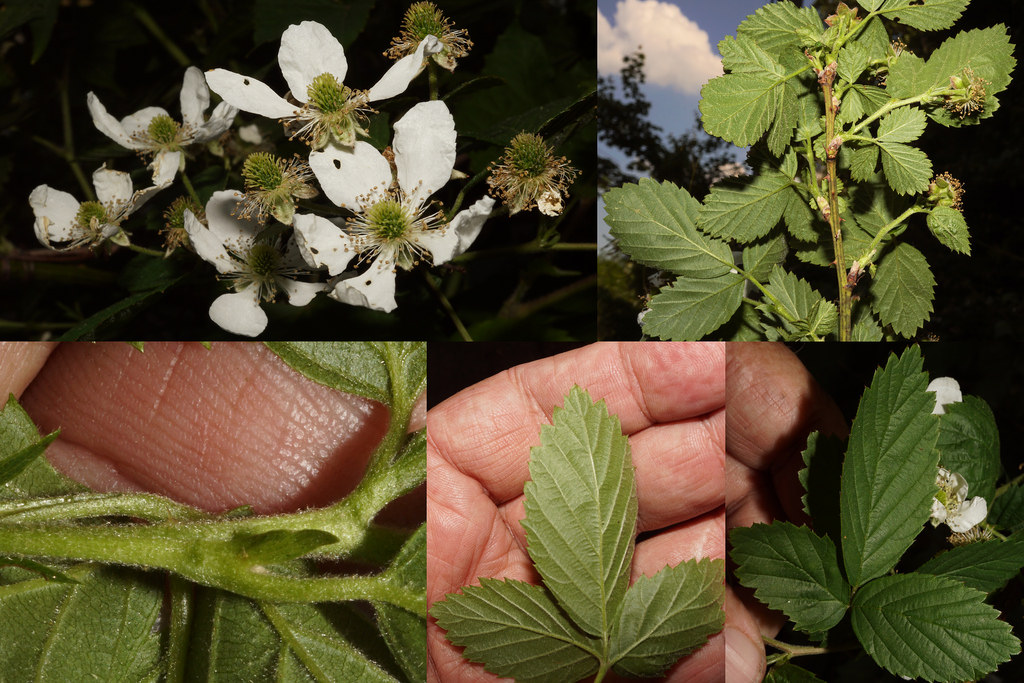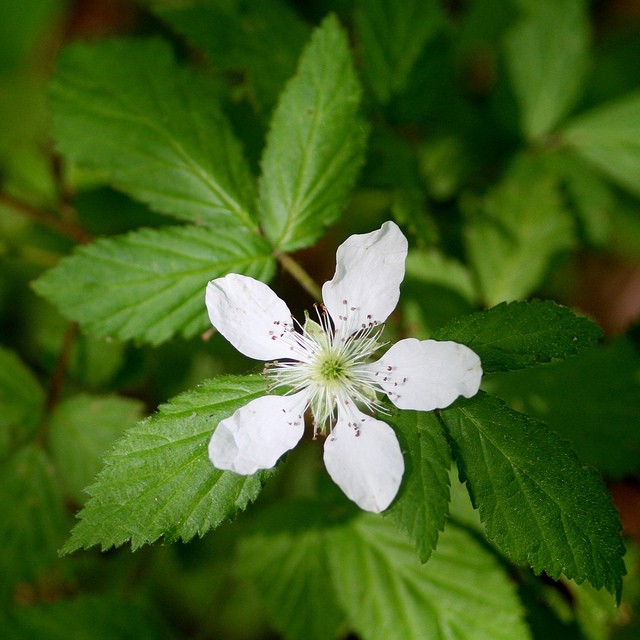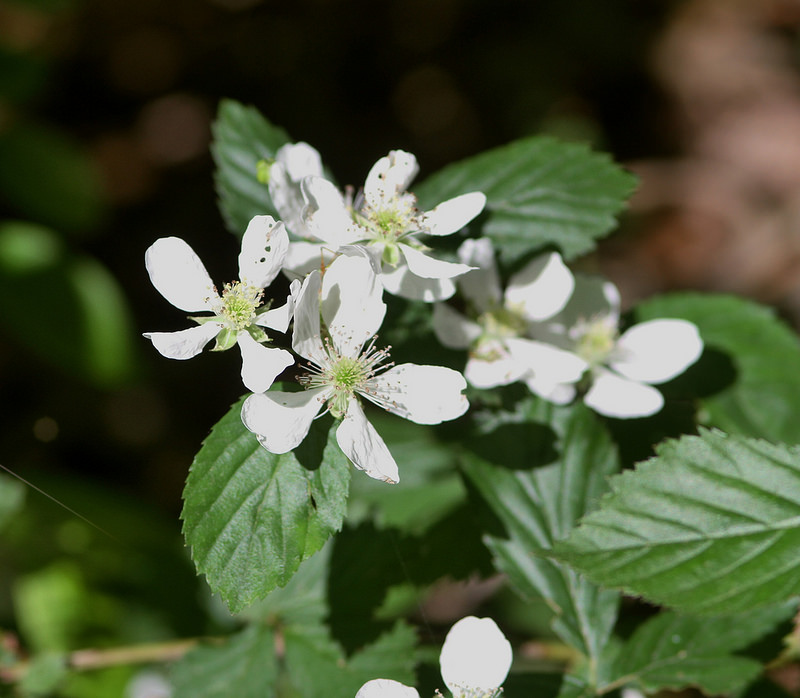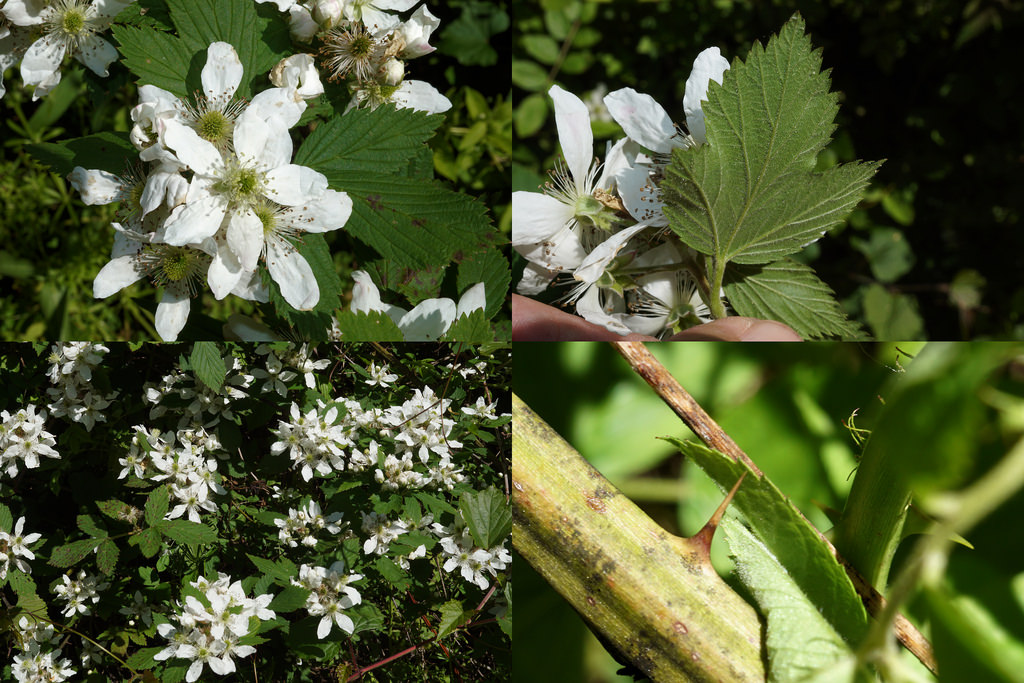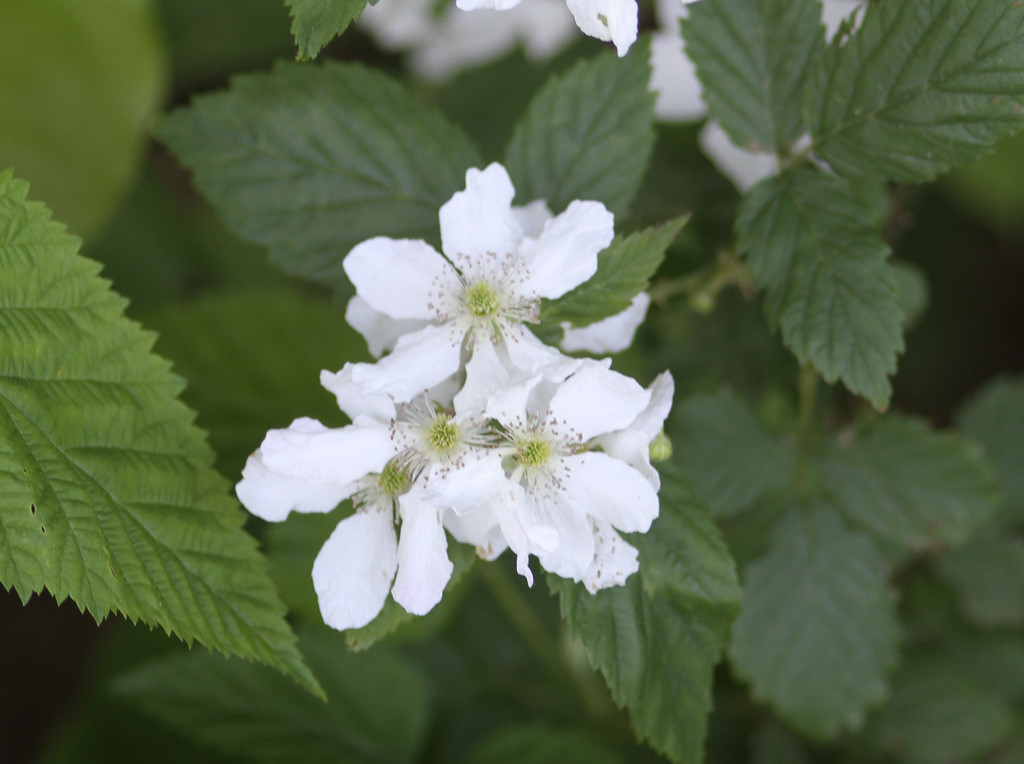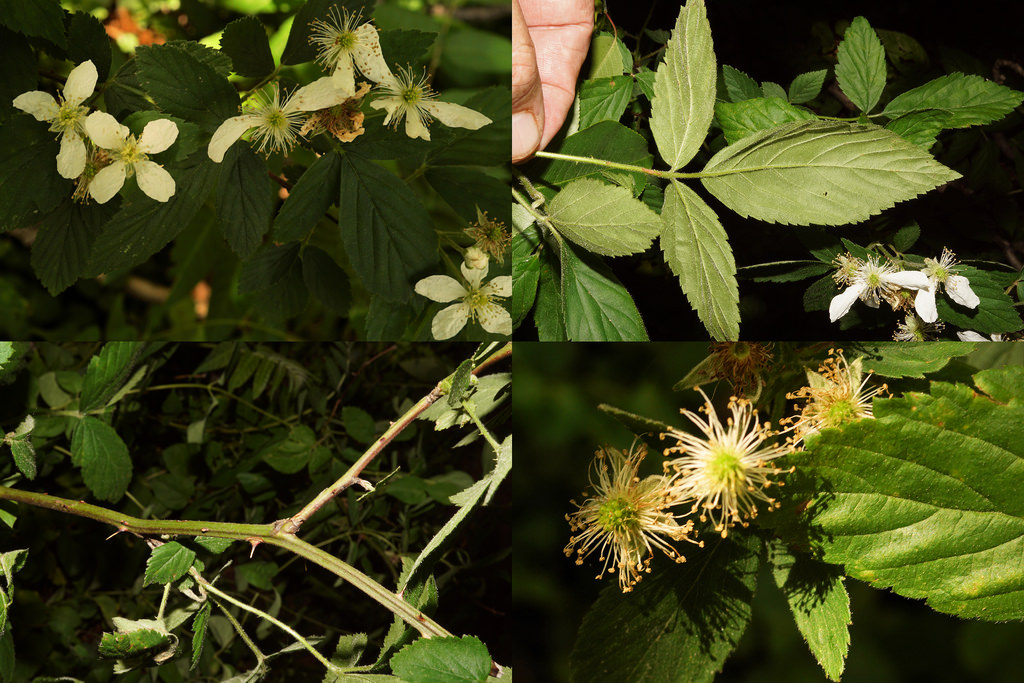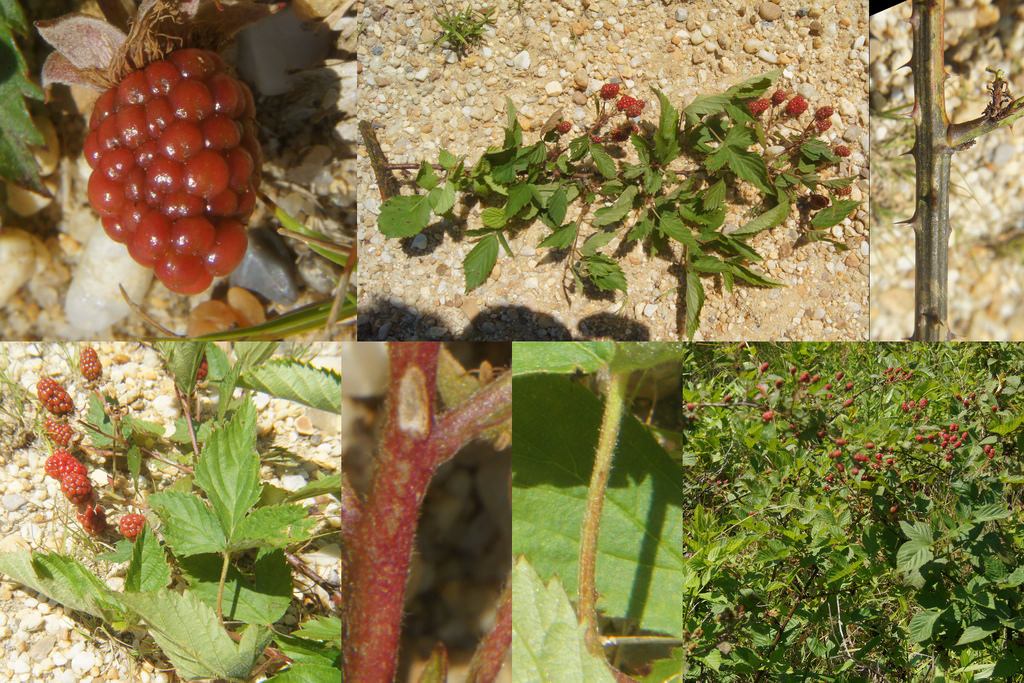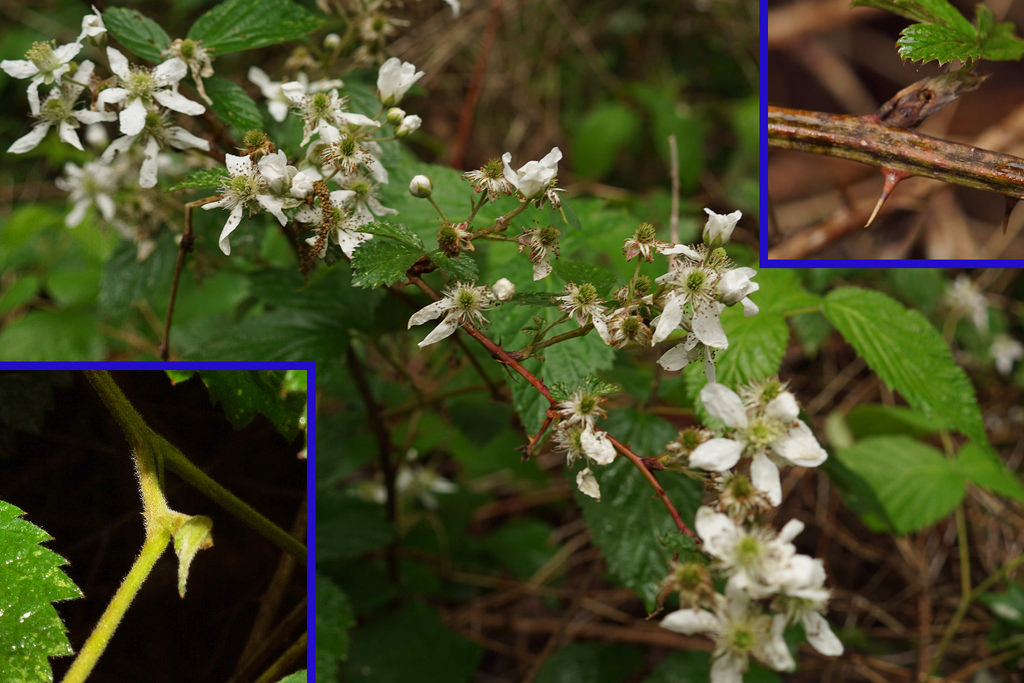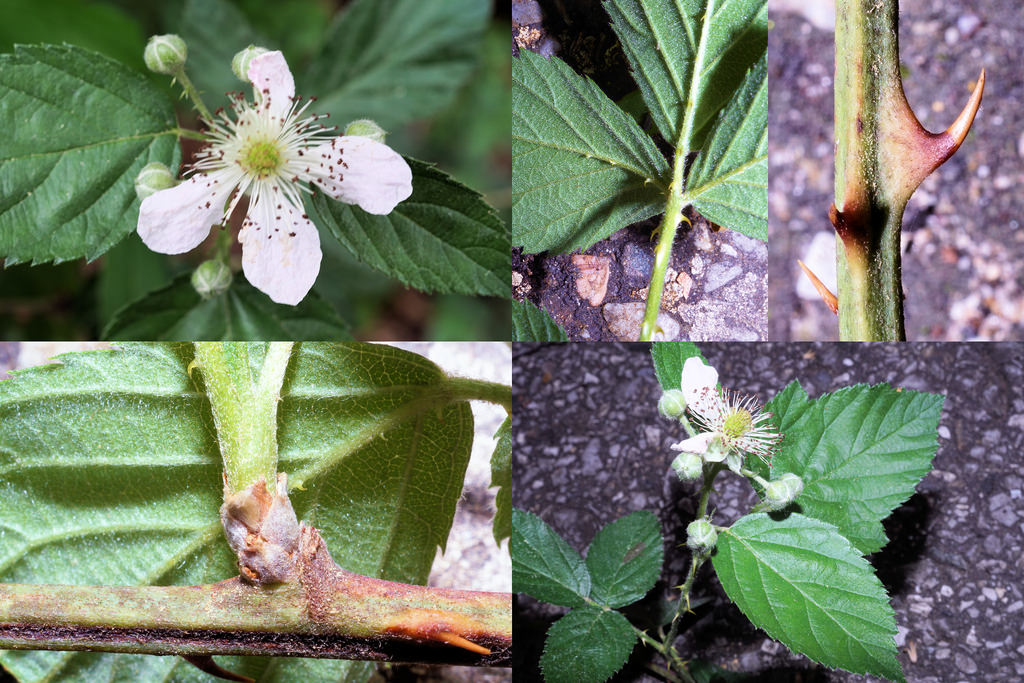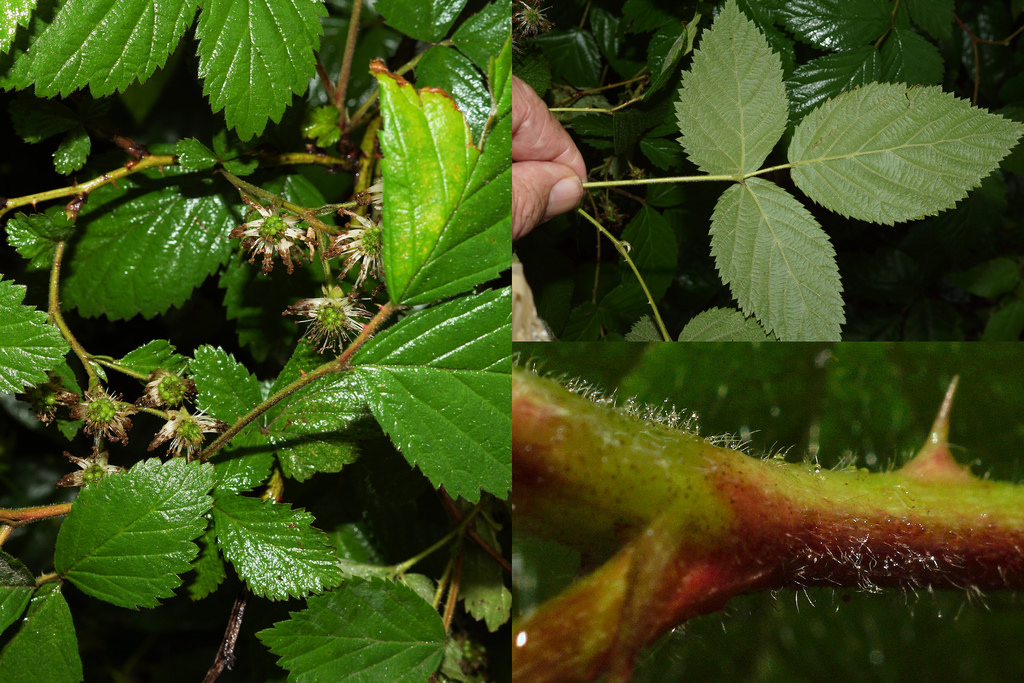Map Snapshot





















252 Records
Seasonality Snapshot
Source: Wikipedia
| Rubus pensilvanicus | |
|---|---|

| |
| Scientific classification | |
| Kingdom: | Plantae |
| Clade: | Tracheophytes |
| Clade: | Angiosperms |
| Clade: | Eudicots |
| Clade: | Rosids |
| Order: | Rosales |
| Family: | Rosaceae |
| Genus: | Rubus |
| Species: | R. pensilvanicus
|
| Binomial name | |
| Rubus pensilvanicus Poir. 1804
| |
| Synonyms[1] | |
|
List
| |
Rubus pensilvanicus, known commonly as Pennsylvania blackberry, is a prickly bramble native to eastern and central North America from Newfoundland south to Georgia, west as far as Ontario, Minnesota, Nebraska, Missouri, and Arkansas. The species is also established as a naturalized plant in California.[2][3]
Rubus pensilvanicus is a prickly shrub up to 3 meters (10 feet) tall. The canes are green at first but then turn dark red, usually ridged, with copious straight prickles. The leaves are palmately compound, usually bearing 5 or 7 leaflets. The flowers are white with large petals, borne in mid-spring. The fruits are large aggregates of 10-100 black drupelets, somewhat sweet and often used for jams and jellies.[4]
The genetics of Rubus are extremely complex, making it difficult to separate the group into species. What some authors lump together as R. pensilvanicus, other authors split into as many as 50 or 60 species.[4]
Rubus pensilvanicus, finds its home in states including Pennsylvania and New York, as well as, a few patches of distribution in the Midwest including Missouri.[5] This perennial, is a member of the Rubus genus with raspberries and blackberries, stands tall with its thorny canes that deter thin skinned humans and animals from trampling through it.[6] The name "pensilvanicus" alludes to a strong presence in the Keystone State, Pennsylvania.
In the summertime, this plant creates copious white blossoms, later giving way to the blackberries that have earned it culinary and ecological significance.[5]
Description
[edit]Rubus pensilvanicus is a 8 foot tall perennial bramble armed with sharp prickles along its stems.[7] The fruit is black to purple in color, fleshy in texture, and edible to humans and wildlife.[8]
The leaf structure of Rubus pensilvanicus is characterized by compound leaves, composed of two or more discrete leaflets. Along the stem, there is a single leaf per node. The leaf blade edges are serrated, featuring distinct teeth. In terms of leaf duration, the leaves either drop off during winter or wither but persist on the plant. Notably, the plant is armed with spines, prickles, or thorns. The dimensions of the leaf blade range from 110 to 220 mm in both length and width. Each leaf possesses a leaf stalk. The fruit, it is of a fleshy nature. The bark of the mature plant is thin and smooth, while the twigs exhibit a winter coloration in shades of brown or gray. The winter buds are characterized by three or more scales, overlapping like shingles, with one edge covered and the other exposed.[8][9]
This particular species is hermaphroditic, possessing both male and female reproductive organs, with pollination primarily facilitated by insects.[10]
Taxonomy
[edit]Rubus pensilvanicus is also known as Rubus abactus a synonym.[5] In 1804 R. pensilvanicus was described by Jean Louis Marie Poiret in Encyclopedie Methodique: Botanique.[11] Some common names include: Blackberry, Dewberry, Pennsylvania Blackberry.[7]
Distribution and habitat
[edit]Rubus pensilvanicus can be found in the eastern and central regions of North America, stretching from Newfoundland south to Georgia and reaching westward to Ontario, Minnesota, Nebraska, Missouri, and Arkansas.[12]
The preferred environmental conditions for Rubus pensilvanicus encompass a range of light exposures, thriving in full sun conditions with a requirement of 6 or more hours of direct sunlight per day. Alternatively, it can adapt to partial shade, where direct sunlight is available only part of the day, totaling 2–6 hours. Regarding soil texture, this species demonstrates versatility, showing affinity for clay, high organic matter, loam (silt), and shallow rocky substrates. Its adaptability extends to varying soil pH levels, with a preference for acidic conditions (<6.0), tolerance for alkaline environments (>8.0), and an ability to flourish in neutral pH ranges (6.0-8.0). Moreover, the plant exhibits adaptability to different soil drainage patterns, thriving in settings with good drainage, as well as in moist conditions and occasionally dry soils. This flexibility in light, soil texture, pH, and drainage underscores the resilience and adaptability of Rubus pensilvanicus across diverse environmental settings.[7]
Conservation
[edit]Rubus pensilvanicus is apparently secure in Nova Scotia. While other parts of Canada like New Brunswick and Québec it is listed as S3 vulnerable.[13]
Disturbance
[edit]Rubus pensilvanicus is an early successional plant that is often found in clear-cuts. Frequent disturbance is necessary for Rubus pensilvanicus to grow and thrive.[14]
Classified as facultative (FAC) by the US National Wetlands Plant list, this plant species is equally likely to thrive in both wetland and non-wetland environments, with an estimated probability ranging from 34% to 66%.[9]
Disease
[edit]Phragmidium violaceum is a rust fungus that can infect Rubus pensilvanicus.This fungus is from France and was first reported to infect Rubus pensilvanicus in 2005.[15]
Uses
[edit]These blackberries can be used for inks or for dyeing cloths, which is not a new practice.[16][17] Blackberries are also a good source of nutrients and are eaten dried by Native Americans.[18][citation needed] Fruits can be made into jams and jellies.[19]
The leaves serve as a browse for white-tailed deer. This bramble is year-round exceptional cover for wildlife. The fruits are an important resource for songbirds, small mammals, foxes, raccoons, and even black bears. As winter arrives, birds and small mammals eat the seeds left behind from decomposed fruit. The flowers attract butterflies and various other pollinators.[7][19]
References
[edit]- ^ "Rubus pensilvanicus Poir". Plants of the World Online.
- ^ "Rubus pensilvanicus". County-level distribution map from the North American Plant Atlas (NAPA). Biota of North America Program (BONAP). 2014.
- ^ "Calflora taxon report, University of California, Rubus pensilvanicus Poiret, Pennsylvania blackberry". Archived from the original on 2015-09-23. Retrieved 2015-08-09.
- ^ a b Alice, Lawrence A.; Goldman, Douglas H.; Macklin, James A.; Moore, Gerry (2014). "Rubus pensilvanicus". In Flora of North America Editorial Committee (ed.). Flora of North America North of Mexico (FNA). Vol. 9. New York and Oxford: Oxford University Press – via eFloras.org, Missouri Botanical Garden, St. Louis, MO & Harvard University Herbaria, Cambridge, MA.
- ^ a b c "Rubus pensilvanicus Poir". USDA Plants Database. Archived from the original on 2023-11-09. Retrieved 2023-11-09.
- ^ "Rubus pensilvanicus - FNA". floranorthamerica.org. Retrieved 2023-11-14.
- ^ a b c d "Rubus pensilvanicus". North Carolina Extension Gardener Plant Toolbox. Retrieved 2023-11-09.
Common Name(s): Blackberry, Dewberry, Pennsylvania Blackberry
- ^ a b "Rubus pensilvanicus (Pennsylvania blackberry)". Go Botany. Archived from the original on 2023-11-09. Retrieved 2023-11-09.
- ^ a b "Rubus pensilvanicus Poir". Intermountain Region Herbarium Network. Retrieved 2023-11-14.
- ^ "Rubus pensilvanicus Pennsylvania blackberry". Plants For A Future. Retrieved 2023-11-14.
- ^ "Rubus pensilvanicus Poir". International Plant Names Index. Archived from the original on 2023-11-09. Retrieved 2023-11-09.
- ^ Decade of North American Geology Geologic Map of North America—Perspectives and explanation. Boulder, Colorado: Geological Society of America. 2005. pp. 1–28. doi:10.1130/dnag-csms-v1.1. ISBN 9780813754178.
- ^ "Rubus pensilvanicus Pennsylvania Blackberry". NatureServe Explorer 2.0. Retrieved 2023-12-02.
- ^ Unger, Irene M.; Kennedy, Ann C.; Muzika, Rose-Marie (May 2009). "Flooding effects on soil microbial communities". Applied Soil Ecology. 42 (1): 1–8. doi:10.1016/j.apsoil.2009.01.007. ISSN 0929-1393.
- ^ Aime, M. C.; Rossman, A. Y. (November 2007). "First Report of the Rust Phragmidium violaceum on Pennsylvania Blackberry in California". Plant Disease. 91 (11): 1517–1517. doi:10.1094/pdis-91-11-1517c. ISSN 0191-2917.
- ^ Grae, Ida (1974). Nature's colors. Dyes from plants. New York: Macmillan. ISBN 978-0-02-544950-3.
- ^ Candela, Rossella G.; Lazzara, Giuseppe; Piacente, Sonia; Bruno, Maurizio; Cavallaro, Giuseppe; Badalamenti, Natale (2021-10-17). "Conversion of Organic Dyes into Pigments: Extraction of Flavonoids from Blackberries (Rubus ulmifolius) and Stabilization". Molecules. 26 (20). 6278. doi:10.3390/molecules26206278. hdl:10447/525820. ISSN 1420-3049.
- ^ Ravichandran, Karishma Sri; Krishnaswamy, Kiruba (2021-11-11). "Sustainable food processing of selected North American native berries to support agroforestry". Critical Reviews in Food Science and Nutrition. 63 (20): 4235–4260. doi:10.1080/10408398.2021.1999901. ISSN 1040-8398.
- ^ a b "Rubus pensilvanicus". Plants of Southern New Jersey. Archived from the original on 2023-11-14. Retrieved 2023-11-14.
External links
[edit]- "Rubus pensilvanicus". Plants for a Future.
- "Rubus pensilvanicus". Calflora. Berkeley, California: The Calflora Database.
- Rubus pensilvanicus in the CalPhotos photo database, University of California, Berkeley
- Jepson Manual Treatment
- Illinois Wildflowers
- Go Botany, New England Wildflower Society
 Media related to Rubus pensilvanicus at Wikimedia Commons
Media related to Rubus pensilvanicus at Wikimedia Commons
